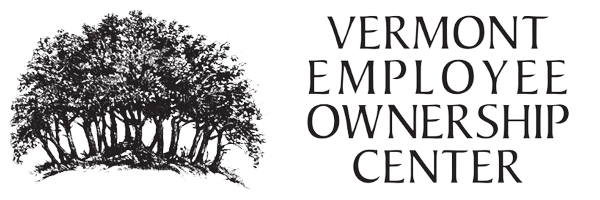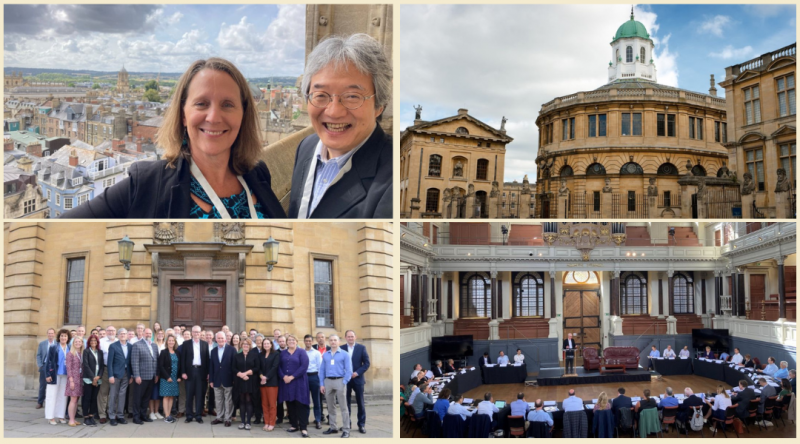VEOC board treasurer and Gardener's Supply executive Cindy Turcot participated in the symposium at Oxford on September 7 & 8.
The 2022 Oxford Symposium was sponsored by the Employee Ownership Foundation.
VEOC: Judging by a quick online search, the Sheldonian Theatre at Oxford looks like an unusually charming setting for a business conference, especially after spending the past couple of years attending virtual webinars. How did you enjoy the venue and the trip overall?
Cindy: We were so fortunate to be in Oxford and at the Sheldonian Theatre. It was an iconic spot and a perfect place for the meeting—there were about 40 of us all sitting in a semi-circle—a perfect collaborative environment.
VEOC: Which session stands out to you as a highlight of the conference, and what’s your key takeaway?
Cindy: It is hard to pick out any one session. The majority of the discussions were about the US model of Employee Stock Ownership Plan (ESOP) and the UK model of Employee Ownership Trust (EOT), and we discussed the positives and negatives of each and their incentives and policy issues. We were very honored to have six Senate staffers join the meeting representing the Senate Finance Committee and HELP Committee. The most amazing part was how interested and active they were in listening and how they might make changes to improve some of the ESOP issues in particular. In addition, eight countries were represented, all trying to figure out the different models and what might work for their countries and how to avoid any pitfalls.
VEOC: The UK is reporting record numbers of employee ownership conversions, roughly doubling the total number of employee-owned businesses over the past two years. Some are announcing that employee ownership is now a “mainstream” business model there. What’s behind the surge, and is the wave heading across the Atlantic?
Cindy: The EOT model has been very popular. Partly it is due to the simplicity of setting up the EOT. Additionally, the cost is relatively low, it is easy to understand and implement, and there are some tax benefits. It is a very different model as it is not stock ownership. An EOT is a trust that pays back the owner through cash, and any excess cash can be distributed to participants. Unlike an ESOP, there is no ownership payout when an employee leaves. Still, it is a great model of running a company with the trust ensuring equity in how the trust is run and the likelihood of the trust continuing in perpetuity.
VEOC: On the second day of the conference, you co-presented “A View from Washington” with James Bonham of The ESOP Association. What’s your take on the future of employee ownership in the US?
Cindy: ESOPs are selling at the same rate that new ones are starting, so we have not seen an overall increase in employee-owned companies here. Unfortunately, when a potential buyer of the ESOP comes in with a higher price, due to regulatory issues (DOL audit issues), the company can be forced to sell to get that higher price for the ESOP participants. I hope that at some point, the ESOP can be looked at as a longer-term model with price not being the only variable considered when approached by a buyer.
Back to “A View from Washington” - There are key issues that need to be addressed:
Awareness – although I do believe there is more awareness about ESOPs and employee ownership, there is more to do. With the Silver Tsunami upon us, we need to make sure the Baby Boomers are aware of employee ownership as an option when they look to sell their companies. We need to educate our professionals (lawyers, accountants) about the benefits, teach about employee ownership in our schools and have more national marketing about the positive reasons that employee ownership is important in our economy and states.
Advocacy – we need to work with our policy makers to advance legislation in support of ESOPs and to lower the regulatory issues especially as it relates to the Department of Labor.
Financing – many ESOPs have seller financing as a component of the transaction. We need to ensure that a company transitioning to an ESOP has access to affordable financing so the transaction is not solely dependent on seller financing.
Insurance – an ESOP is overseen by Trustees and the Trustees need access to insurance. With increased DOL lawsuit activity, insurers are starting to dwindle. If we no longer have insurance for Trustees, the ESOP model will not be feasible.
EOTs are starting to show up in the US, and I suspect the model will be appealing to some owners. EOTs have much less oversight and cost compared to an ESOP, but they are very different than ESOPs and don't have the share ownership that an ESOP has.




